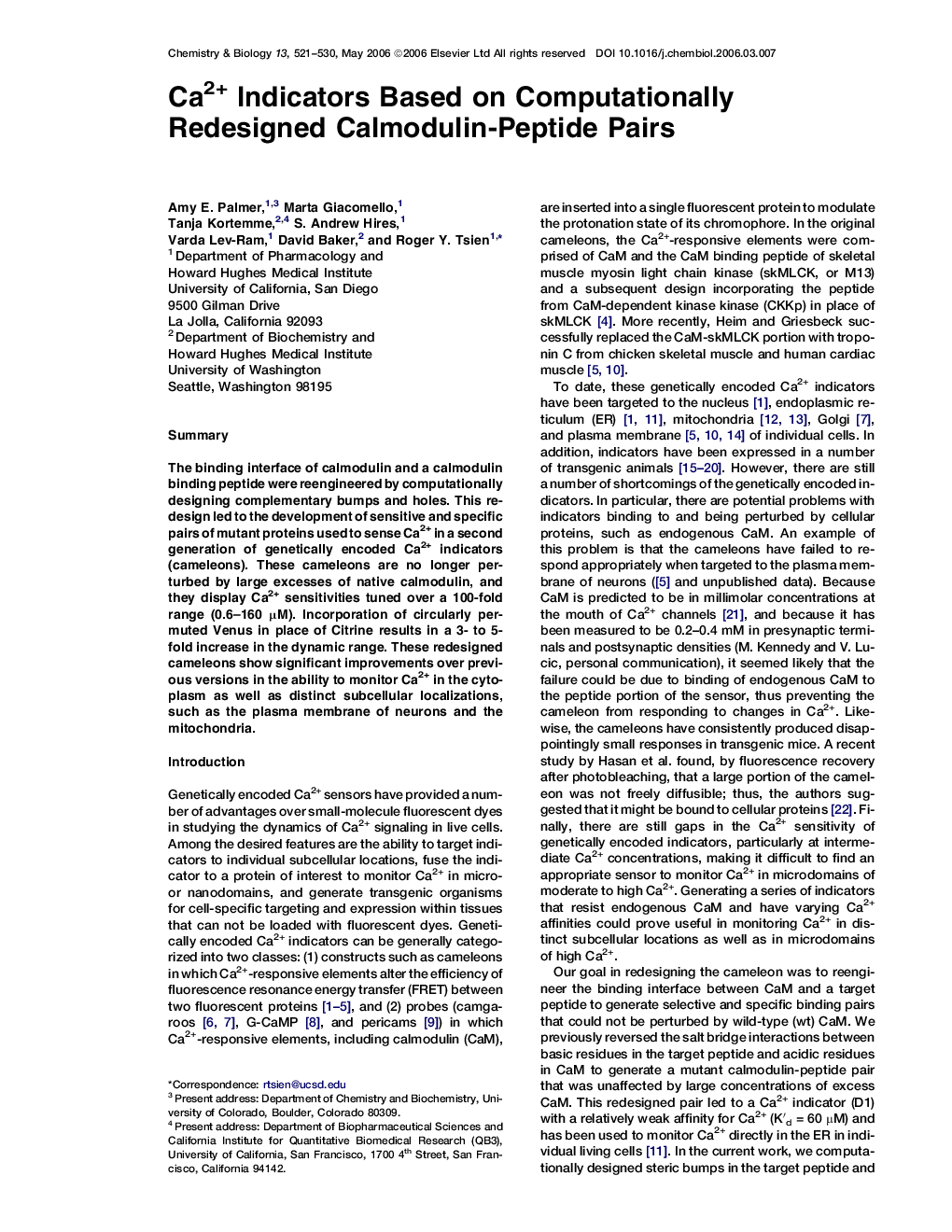| Article ID | Journal | Published Year | Pages | File Type |
|---|---|---|---|---|
| 1392930 | Chemistry & Biology | 2006 | 10 Pages |
SummaryThe binding interface of calmodulin and a calmodulin binding peptide were reengineered by computationally designing complementary bumps and holes. This redesign led to the development of sensitive and specific pairs of mutant proteins used to sense Ca2+ in a second generation of genetically encoded Ca2+ indicators (cameleons). These cameleons are no longer perturbed by large excesses of native calmodulin, and they display Ca2+ sensitivities tuned over a 100-fold range (0.6–160 μM). Incorporation of circularly permuted Venus in place of Citrine results in a 3- to 5-fold increase in the dynamic range. These redesigned cameleons show significant improvements over previous versions in the ability to monitor Ca2+ in the cytoplasm as well as distinct subcellular localizations, such as the plasma membrane of neurons and the mitochondria.
